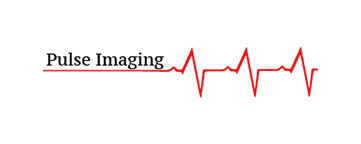ALDOSTERONE PLASMA RENIN ACTIVITY RATIO ALDO PRAR LC-MS-MS
Also known as Aldo pra,
What is an Aldosterone PRAR test?
Aldosterone is a hormone that helps maintain proper sodium and potassium levels in circulation and regulates blood volume and blood pressure. Renin is an enzyme that regulates the production of aldosterone. The stories of aldosterone and renin in the blood are measured in these tests.
The adrenal glands, which are placed on the top of each kidney, create aldosterone. Aldosterone promotes sodium (salt) retention and potassium elimination by the kidneys. Renin is a protein generated by the kidneys that regulate the activity of the hormone angiotensin, which stimulates the production of aldosterone by the adrenal glands.
Renin is released by the kidneys when blood pressure drops, or the sodium chloride concentration in the tubules of the kidney decreases. Renin breaks down the blood protein angiotensinogen to produce angiotensin I, which is transformed into angiotensin II by a second enzyme. Angiotensin II constricts blood vessels and increases the synthesis of aldosterone. Overall, this raises blood pressure while maintaining appropriate sodium and potassium levels.
Aldosterone overproduction (hyperaldosteronism or simply aldosteronism) or underproduction (hypoaldosteronism) can be caused by some conditions.
Because renin and aldosterone are closely associated, they're frequently examined jointly to determine what's causing an aberrant aldosterone level.
Aldosterone/Renin ratio (ARR) is a screening test for primary aldosteronism in high-risk hypertensive adults. To calculate the ratio, blood levels of aldosterone and renin are measured, where the aldosterone result is divided by the renin result. Though it is difficult to interpret, the ARR is regarded as the most reliable screening for primary aldosteronism. To avoid false positives or negatives, anything that could interfere with the test, such as drugs, posture, sodium intake, and plasma potassium, must be considered before the test. After screening, other tests, such as suppression tests, are performed to confirm the diagnosis.
What is the test used for?
Aldosterone and renin tests are performed to determine whether the adrenal glands are making enough aldosterone and differentiate between potential causes of excess or insufficiency.
Primary aldosteronism, commonly known as Conn's syndrome, is a condition that produces high blood pressure and can be detected with these tests. If the test is positive, stimulation and suppression testing can be used to examine aldosterone production further.
The highest levels of aldosterone and renin are in the morning, and they fluctuate throughout the day. In addition, the position of the body, stress, and certain prescribed medications may impact results.
Why and when do you need this test?
When someone has high blood pressure, blood aldosterone and renin test are generally ordered together, especially if the person also has low potassium. Even if potassium levels are within normal limits, testing may be necessary if standard drugs fail to control high blood pressure or if hypertension develops at a young age. Because primary aldosteronism is a potentially curable form of hypertension, it is essential to diagnose it early to be treated effectively.
When a healthcare provider suspects adrenal insufficiency or Addison's disease, aldosterone levels, along with other tests, are occasionally ordered. The aldosterone stimulation test, also known as ACTH stimulation, measures aldosterone and cortisol levels to identify whether a person has Addison disease, reduced pituitary function, or a pituitary tumor. After ACTH stimulation, an expected result is an increase in cortisol and an increase in aldosterone.
What kind of sample is required for the test?
A small needle will be used by a healthcare professional to obtain a blood sample from a vein in your arm. A small amount of blood will be collected into a test tube or vial once the needle is inserted. When the hand goes in or out, it may sting a little. However, it usually takes less than five minutes to complete this process.
Do you need to prepare for the test?
Before collecting blood samples, the healthcare professional may ask you to stand or lie down ( for 15-30 minutes) for an aldosterone and renin measurement. Before the test, you may be told to avoid specific meals, beverages, or certain medications, so any directions you are given must be followed.
Are there any risks to this test?
Having a blood test carries relatively little risk. You may experience slight pain or bruising where the needle gets inserted, but most symptoms disappear quickly.
What do the test results mean?
Primary aldosteronism (Conn syndrome) is characterized by the adrenal glands producing too much aldosterone, usually due to a benign tumor in one of the glands. A high aldosterone level causes increased sodium (salt) reabsorption and potassium loss by the kidneys, resulting in an electrolyte imbalance. High blood pressure, headaches, and muscle weakness are signs and symptoms, especially if potassium levels are deficient.
When someone has hypertension, and their blood potassium level is lower than usual (hypokalemia), the healthcare provider typically looks for aldosteronism as a differential diagnosis. Blood is drawn from both adrenal veins and tested to see whether there is a difference in the quantity of aldosterone (and sometimes cortisol) produced by either of the adrenal glands to rule out whether only one or both of the glands are impacted.
Secondary aldosteronism, more common than primary aldosteronism, is caused by anything other than an adrenal gland condition that causes excess aldosterone production. Any disorder that reduces blood flow to the kidneys lowers blood pressure or lowers sodium levels could cause it. Congestive heart failure, liver cirrhosis, kidney diseases, or toxemia of pregnancy (pre-eclampsia) can all cause secondary aldosteronism. It is also common when you're dehydrated. The cause of aldosteronism is usually apparent in these conditions. The most common cause of secondary aldosteronism is renal artery stenosis, which is a constriction of the arteries that supply blood to the kidneys causing high blood pressure due to increased levels of renin and aldosterone and may be treated with surgery or angioplasty.
Hypoaldosteronism (low aldosterone) is a common sign of adrenal insufficiency, causing dehydration, low blood pressure, a low salt level, and a high potassium level in the blood. Congenital adrenal hyperplasia, a disorder in which babies lack an enzyme needed to create cortisol, can also reduce aldosterone production in some cases.
Related Tests: Aldosterone serum, aldosterone urine, electrolyte test, serum potassium, serum sodium, serum cortisol
Our clinical experts continually monitor the health and medical content posted on CURA4U, and we update our blogs and articles when new information becomes available. Last reviewed by Dr.Saad Zia on June 05, 2023.
References
Drug effects on aldosterone/plasma renin activity ratio in primary aldosteronism - PubMed (nih.gov)
Frequently ordered together
Potassium
Electrolytes Serum
Sodium
Aldosterone Urine
Plasma Renin Activity
CORTISOL-TOTAL
POTASSIUM-PLASMA
Aldosterone Serum
Plasma Renin Activity LC-MS-MS
15.00$
20.00$
15.00$
48.00$
24.00$
26.00$
21.00$
51.00$
24.00$














